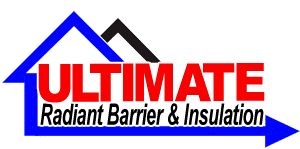In the vast, bustling city of Houston, where modernity meets Southern charm, one elemental challenge stands out: the heat. Houstonians are no strangers to sweltering summers, with temperatures often skyrocketing. In such conditions, the role of a well-insulated home becomes paramount, and the epicenter of this thermal battle lies in one’s attic. Let’s dive into why proper Attic Insulation Houston is so crucial for homes in Houston.
Why Houston Homes Bear the Brunt
Houston’s geographical position coupled with its humid subtropical climate makes it a hotbed (quite literally) for high temperatures. The city experiences long, humid summers, which means homes are continuously battling against the seeping heat.
Attics, being directly under the roof, are particularly susceptible. As the sun blazes down on rooftops, attics can become furnaces, pushing the temperatures in the living spaces below. This is why, in Houston, insulating your attic isn’t just an option—it’s a necessity.
The Science Behind Attic Insulation
Insulation acts as a thermal barrier. In simple terms, it slows down the transfer of heat. In the context of Houston homes, this means that during summers, the heat from the sun-soaked roof and attic doesn’t easily penetrate into the cooler living areas below.
But it’s not just about reflecting heat. Proper insulation also plays a pivotal role in:
- Energy Efficiency: A well-insulated attic means your air conditioning system doesn’t have to work overtime. This leads to reduced energy consumption and, consequently, lower energy bills.
- Comfort: A home should be a sanctuary, a place of comfort. Proper attic insulation ensures consistent temperatures throughout your home, enhancing overall comfort.
- Protection Against Moisture: Houston’s humidity can be a double-edged sword. Insulation can help prevent moisture buildup, safeguarding your home against mold and structural damage.
Types of Attic Insulation
When it comes to attic insulation, one size doesn’t fit all. There are multiple types to choose from:
- Batt and Roll Insulation: Also known as blanket insulation, this is often made of fiberglass and comes in rolls. It’s a popular choice for its ease of installation.
- Loose-Fill Insulation: Made of small particles of foam, fiber, or other materials, this insulation is blown into attic spaces, making it ideal for areas with irregular shapes or obstructions.
- Spray Foam Insulation: As the name suggests, this insulation is sprayed into place, where it expands and solidifies, offering a tight seal against heat and moisture.
- Radiant Barriers: These reflective barriers are particularly effective in hot climates like Houston’s, reflecting the radiant heat from the sun away from living spaces.
Ensuring Effective Insulation
Merely having insulation isn’t enough. It’s crucial to ensure its effectiveness:
- Adequate R-Value: The R-value measures insulation’s resistance to heat flow. In Houston, where the heat is relentless, opting for insulation with a higher R-value is advisable.
- Seal All Gaps: Even tiny gaps or cracks can significantly reduce insulation efficiency. Ensure all openings, especially around ducts, vents, or wires, are sealed.
- Ventilation is Key: While insulating is vital, so is ventilation. An attic needs to breathe to prevent moisture buildup. Ensure there’s a balance between insulation and ventilation.
- Regular Inspections: Over time, insulation can deteriorate, compact, or even get damaged by pests. Regularly inspecting and maintaining your attic insulation ensures it remains effective.
The Bigger Picture
Beyond personal comfort and energy savings, there’s a broader perspective to consider. As the world grapples with the realities of climate change, energy conservation isn’t just an individual concern—it’s a global one. By ensuring our homes are efficiently insulated, we’re not just saving on our energy bills; we’re contributing to a larger movement towards a more sustainable future.
Conclusion
As Houston heats up, the role of proper attic insulation becomes more critical than ever. It’s a blend of science, choice, and responsibility, aimed at creating comfortable, energy-efficient homes that stand tall against the city’s challenging climate. And as homeowners, understanding and implementing this is our way of adapting, saving, and contributing to a greener future.
FAQs:
- How often should I inspect or replace my attic insulation?
- It’s advisable to inspect your insulation annually. Depending on its type and quality, insulation may last anywhere from 15 to 50 years.
- Is there a specific time of year best suited for insulating my attic?
- While insulation can be installed any time of the year, many homeowners choose the milder spring or fall months for the task.
- Can I install attic insulation by myself?
- Some types, like batt insulation, can be DIY projects. However, for more complex forms like spray foam, it’s best to hire professionals.
- How do I know if my current insulation is still effective?
- If you’re experiencing higher energy bills, fluctuating indoor temperatures, or signs of moisture in your attic, it might be time to check your insulation.
- Does attic insulation also benefit me during Houston’s cooler months?
- Absolutely! While insulation prevents heat from entering in the summer, it also stops heat from escaping during the cooler months, keeping your home warm.


